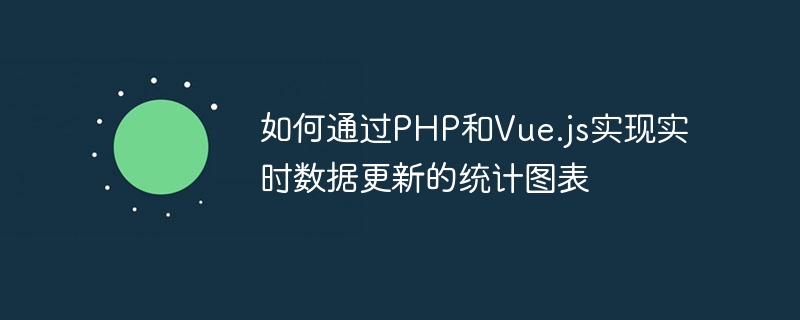

How to implement statistical charts with real-time data updates through PHP and Vue.js
Introduction:
In modern web applications, data visualization is a very important part. Through statistical charts, we can understand the trends and patterns of data more clearly. Moreover, if these statistical charts can be updated in real time, real-time data analysis and decision support can be provided. This article will introduce how to use PHP and Vue.js to implement statistical charts with real-time data updates.
Technical preparation:
Step 1: Set the basic HTML structure
First, we need to set the basic HTML structure. In this example, we will create a simple bar chart.
<!DOCTYPE html>
<html>
<head>
<title>实时数据统计图表</title>
<!-- 引入Chart.js库 -->
<script src="https://cdn.jsdelivr.net/npm/chart.js"></script>
</head>
<body>
<div id="app">
<canvas id="chart"></canvas>
</div>
<!-- 引入Vue.js库 -->
<script src="https://cdn.jsdelivr.net/npm/vue"></script>
<!-- 引入自定义的脚本 -->
<script src="app.js"></script>
</body>
</html>Step 2: Write PHP back-end code
Next, we need to write PHP back-end code to obtain real-time data. In this example, we will use a simple random number to simulate real-time data.
<?php // 随机生成一个实时数据 $data = rand(1, 10); // 将数据返回给前端 echo $data;
Step 3: Write Vue.js code
Then, we need to write Vue.js code to handle the acquisition and update of data. In this example, we will use Vue.js components and lifecycle hook functions to achieve this.
First, create a Vue instance in the app.js file and define the required data and methods.
// 创建Vue实例
new Vue({
el: '#app',
data: {
chart: null, // 图表对象
data: [], // 数据数组
labels: [], // 标签数组
},
methods: {
// 初始化图表
initChart() {
const ctx = document.getElementById('chart').getContext('2d');
this.chart = new Chart(ctx, {
type: 'bar',
data: {
labels: this.labels,
datasets: [{
label: '实时数据',
data: this.data,
backgroundColor: '#36a2eb',
}]
},
options: {
scales: {
y: {
beginAtZero: true
}
}
}
});
},
// 获取实时数据
fetchData() {
axios.get('data.php').then(response => {
const data = response.data;
this.data.push(data); // 将数据加入到数组中
this.labels.push(new Date().toLocaleTimeString()); // 将时间标签加入到数组中
this.chart.update(); // 更新图表
}).catch(error => {
console.error(error);
});
},
},
mounted() {
this.initChart(); // 初始化图表
this.fetchData(); // 获取实时数据
setInterval(this.fetchData, 2000); // 每两秒钟获取一次实时数据
}
});Step 4: Run the code
Finally, we need to save the above code as an app.js file and run the PHP built-in web server.
Execute the following command in the terminal:
php -S localhost:8000
Then, open http://localhost:8000 in the browser to see the real-time updated histogram.
Conclusion:
Through the combination of PHP and Vue.js, we can easily implement statistical charts with real-time data updates. By constantly getting the latest data and updating charts, we can monitor and analyze data changes in real time. This is very helpful for data-driven decision-making and business process optimization.
I hope this article will help you understand how to implement statistical charts with real-time data updates through PHP and Vue.js!
The above is the detailed content of How to implement statistical charts with real-time data updates through PHP and Vue.js. For more information, please follow other related articles on the PHP Chinese website!